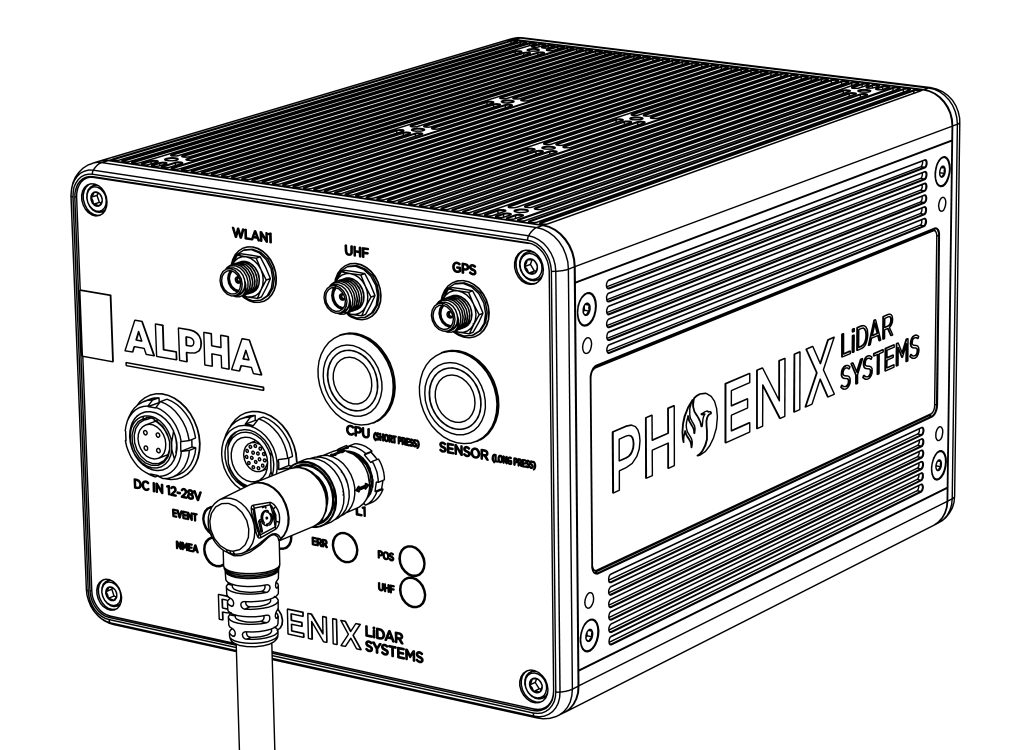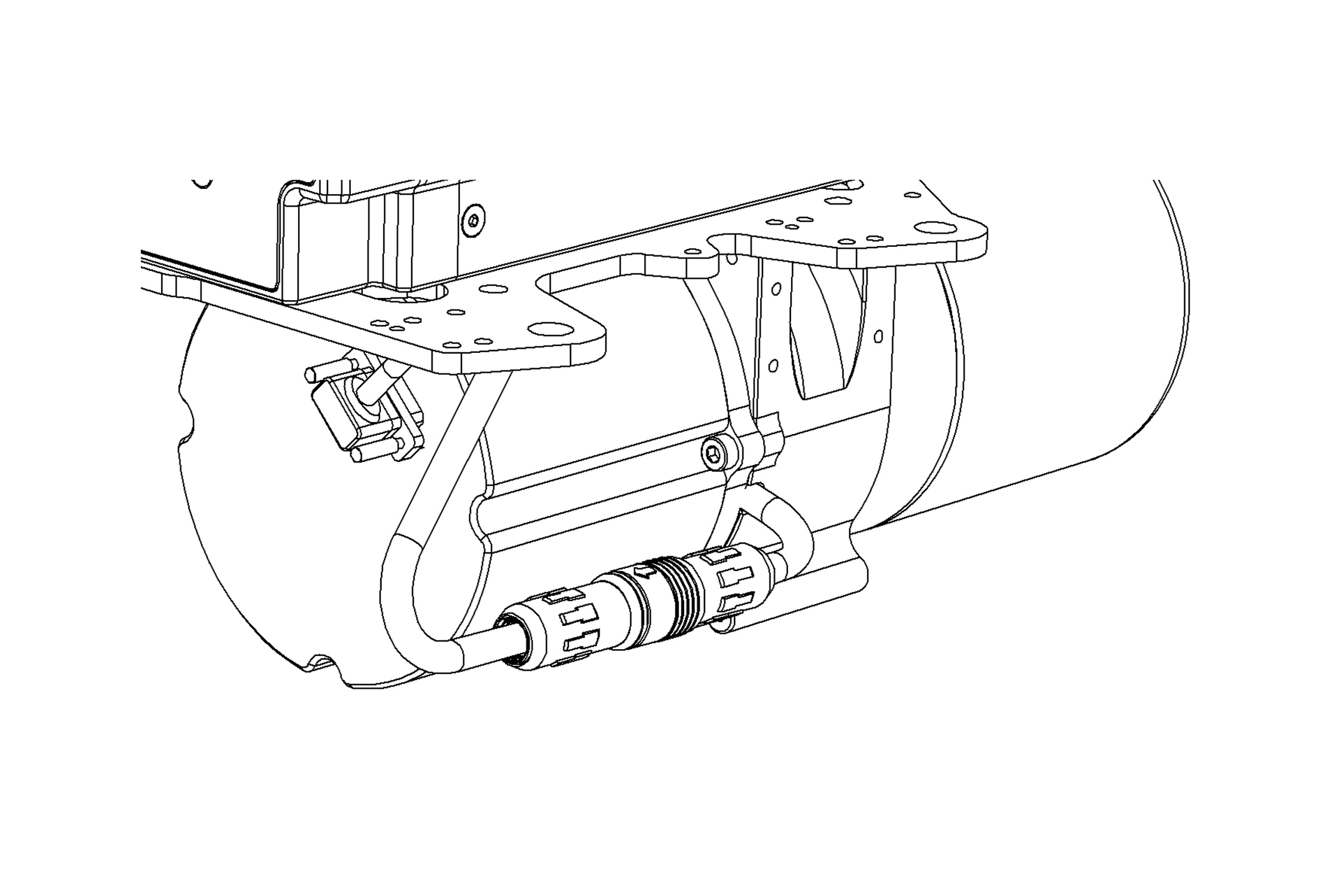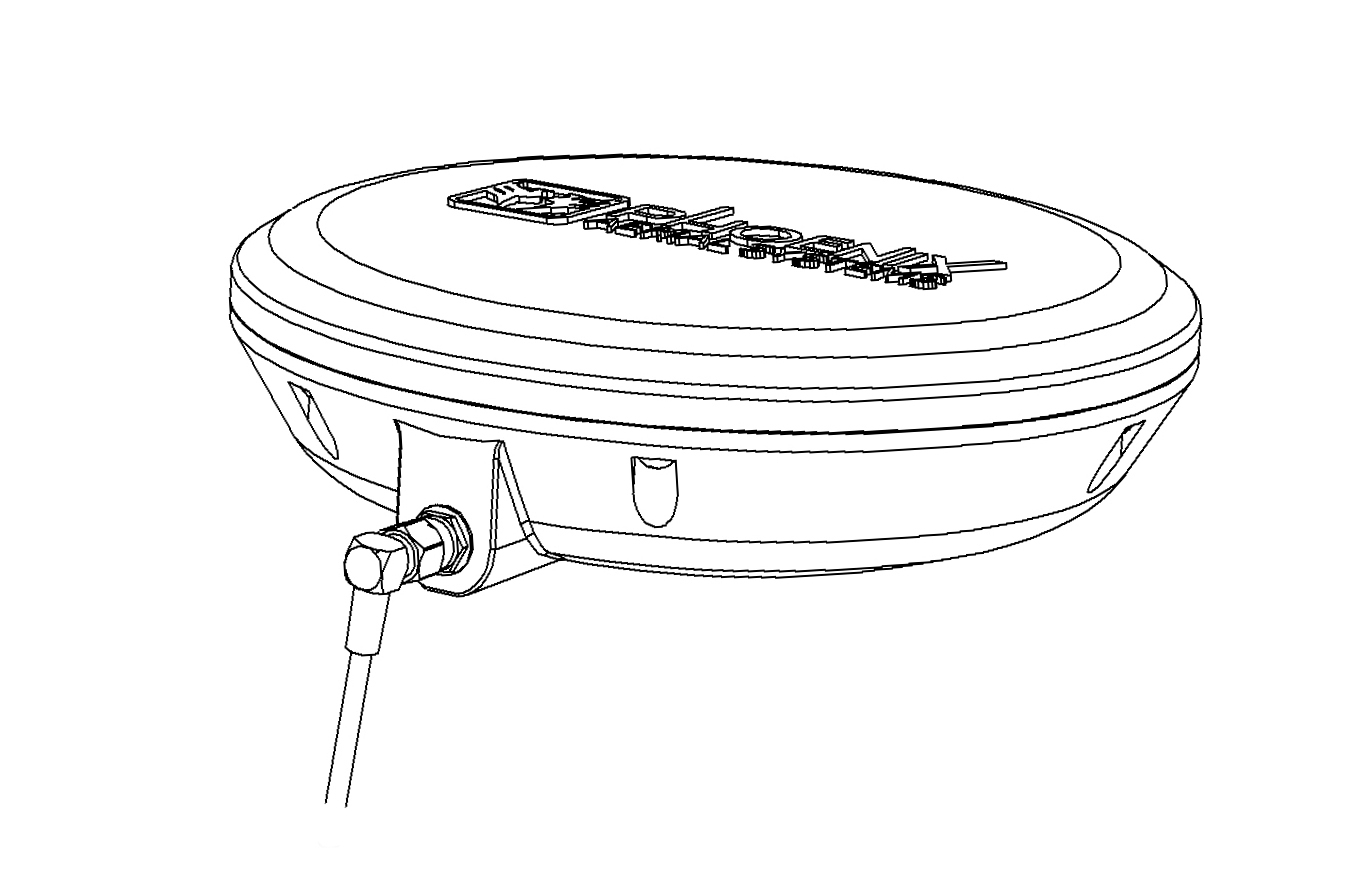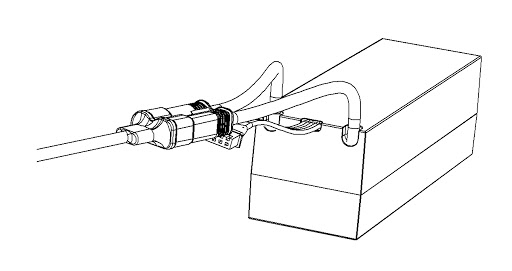IMU-32/IMU-33/IMU-34
1. Plug the right-angled end of the LiDAR/IMU cable into the L1 port.

2. Plug each end of the LiDAR/IMU cable into their respective ports on the LiDAR and IMU units. It may be helpful to use a flathead screwdriver to tighten the IMU connector to its port on the IMU.

3. If your system includes a camera such as a DSLR, plug the right-angled end of the 25-pin D-Sub I/O cable into the I/O port.
4. If your system includes a single Basler camera, attach the right-angled 6-pin Hirose end of the I/O cable into the I/O port on the Basler camera. Additionally, connect an ethernet cable from the ethernet port on the Basler camera to the ethernet port on the Nav Box.
5. Connect one end of the GNSS antenna cable into the GNSS1 port and the other end into the GNSS Receiver terminal.

6. If using Wi-Fi to connect to rover, you must connect a 5.8 GHz Wi-Fi antenna into the WLAN 1 port. If your AL3-32 includes a dual Wi-Fi antenna configuration, connect the secondary 5.8 GHz Wi-Fi antenna cable into the WLAN 2 port.
7. If using UHF to send differential GNSS corrections to rover, you must connect the UHF antenna to the UHF port.
8. Plug the right-angled end of the Power Cable with Integrated Splitter into the DC IN port.

9. Determine the main type of power source the rover will utilize and connect the corresponding power connector, either an XT60 (yellow) connector or an EC5 (blue) connector.


Last updated